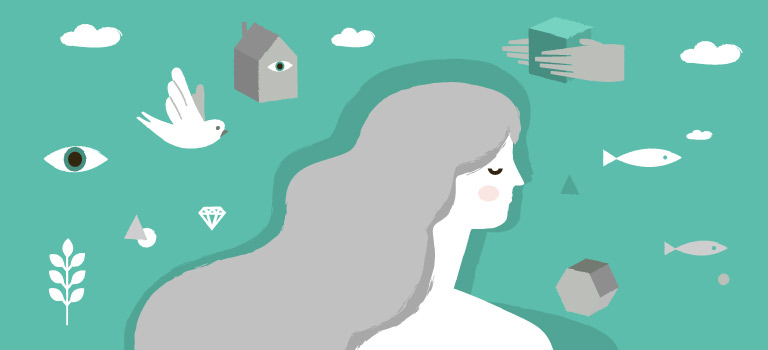Addressing Mental Health Conditions Among Women Remains a National Priority

During March, we recognize Women’s History Month. Considering the United States Census Bureau estimates that 50.8 percent of the total U.S. population is female, we recognize the journey and milestones of a little more than half our total population. The progress of women can be viewed through some major milestone events. Many strides have been made for women beginning in 1865 with the suffrage movement, with some women ultimately earning the right to vote with the 19th Amendment in 1919. The Equal Pay Act was passed by Congress in 1963, and Title IX of the Education Amendments—which prohibited discrimination under any education program or activity receiving federal financial assistance—was signed into law in 1972. In 1987 Congress passed Public Law 100-9, designating the month of March as Women’s History Month (PDF, 232 KB). While some glass ceilings have been smashed, others remain—and progress continues.
In 1999 the first Surgeon General’s report on mental health was released, and awareness of mental health issues has increased since then. And while the realm of mental health for women is much better today, there is still room for growth and improvement. The National Institute of Mental Health states that mental health disorders can affect women and men differently, and some disorders such as depression and anxiety are more common in women. The World Health Organization reports that “depressive disorders account for close to 41.9 percent of the disability from neuropsychiatric disorders among women compared to 29.3 percent among men.” In addition, certain types of mental disorders are unique to women, further demonstrating gender disparities when it comes to mental health.
Risk factors and gender bias contribute to mental health issues in women (PDF, 495 KB). Women earn less pay than men, about 1 in 3 women are victims of violence, and an estimated 65 percent of caregivers are women. Lack of insurance or the cost of care may prevent women from seeking help. Stigma historically associated with women and mental illness and lack of awareness about mental health issues, treatment options, and available services along with lack of time or related support (e.g., time off work, childcare) are all factors that act as barriers to accessing mental health care services among women.
The U.S. Department of Health & Human Services Office on Women’s Health notes that more than 1 in 5 women in the United States experienced a mental health condition in the past year. Mental health conditions experienced by women include substance misuse and addiction disorders, anxiety disorders, bipolar and related disorders, body dysmorphic disorder, borderline personality disorder, depression, feeding and eating disorders, obsessive-compulsive disorder, postpartum depression, and trauma- and stressor-related disorders.
Women’s issues refers to any concern that may impact a woman’s mental health. These issues represent a wide range of mental health concerns that women may face at some point in their lives. These issues can burden and prevent women from coping with daily stressors or accomplishing personal goals. Social, cultural, and political shifts have influenced the mental health issues that women experience. As a result, women may find their mental health affected. It’s important to note that there are within-group differences and that women from diverse backgrounds (i.e., socioeconomic, cultural, sexual orientation, or otherwise marginalized) experience these shifts in different ways.
A change in thoughts, behaviors, or moods that interferes with one’s ability to perform natural functions (in one’s daily life, in relationships, or with work) or causes some harm to the person that lasts longer than two weeks may indicate a mental health issue. Counselors can help women figure out whether they have a mental health condition by working with them to understand and identify any of the following:
- Thoughts including but not limited to excessive and uncontrollable worry; obsessions; unwanted thoughts, ideas, or images; impulses that are not consistent with belief systems.
- Behaviors including but not limited to changes in eating or exercise, increased body tension as a result of restlessness or feeling on edge, lashing out and irritability, compulsive behaviors performed in response to or in order to reduce stress.
- Other psychological or physical symptoms including but not limited to fatigue, muscle tension, sleep disturbance, memory issues, prolonged sadness, or anxiety.
These are but a few symptoms that may indicate a mental health condition. Once identified, counselors work with clients to create treatment plans to improve mental health and well-being. Treatment plans for mental health conditions are individualized and depend on the specific mental health condition and severity. They can include attending individual counseling/therapy, taking on psychoeducation and skills training, learning coping strategies, identifying and managing thoughts, embracing holistic approaches (diet and exercise), or identifying mutual support groups.
References
Castonguay, L.G., & Olmanns, T.F. (Eds.). (2013). Psychopathology: From science to clinical practice. New York: Guilford Press.
American Psychiatric Association. (2013). Diagnostic and statistical manual of mental health disorders (5th ed.). Washington, DC: Author.
Citation for this content: Northwestern University’s online Master of Arts in Counseling program.

